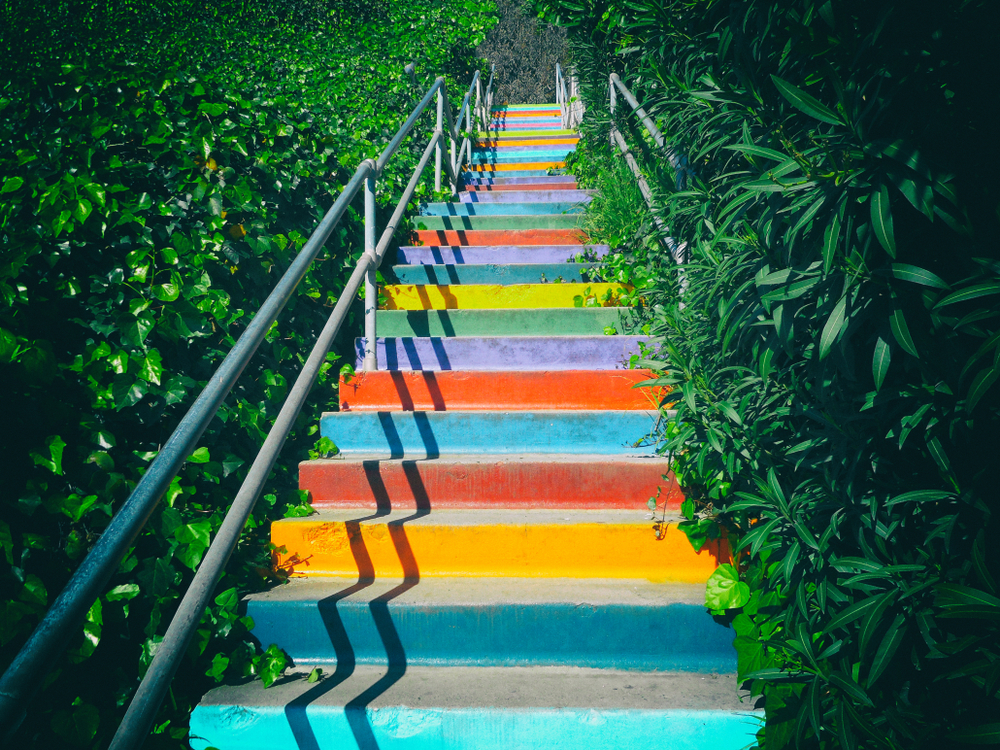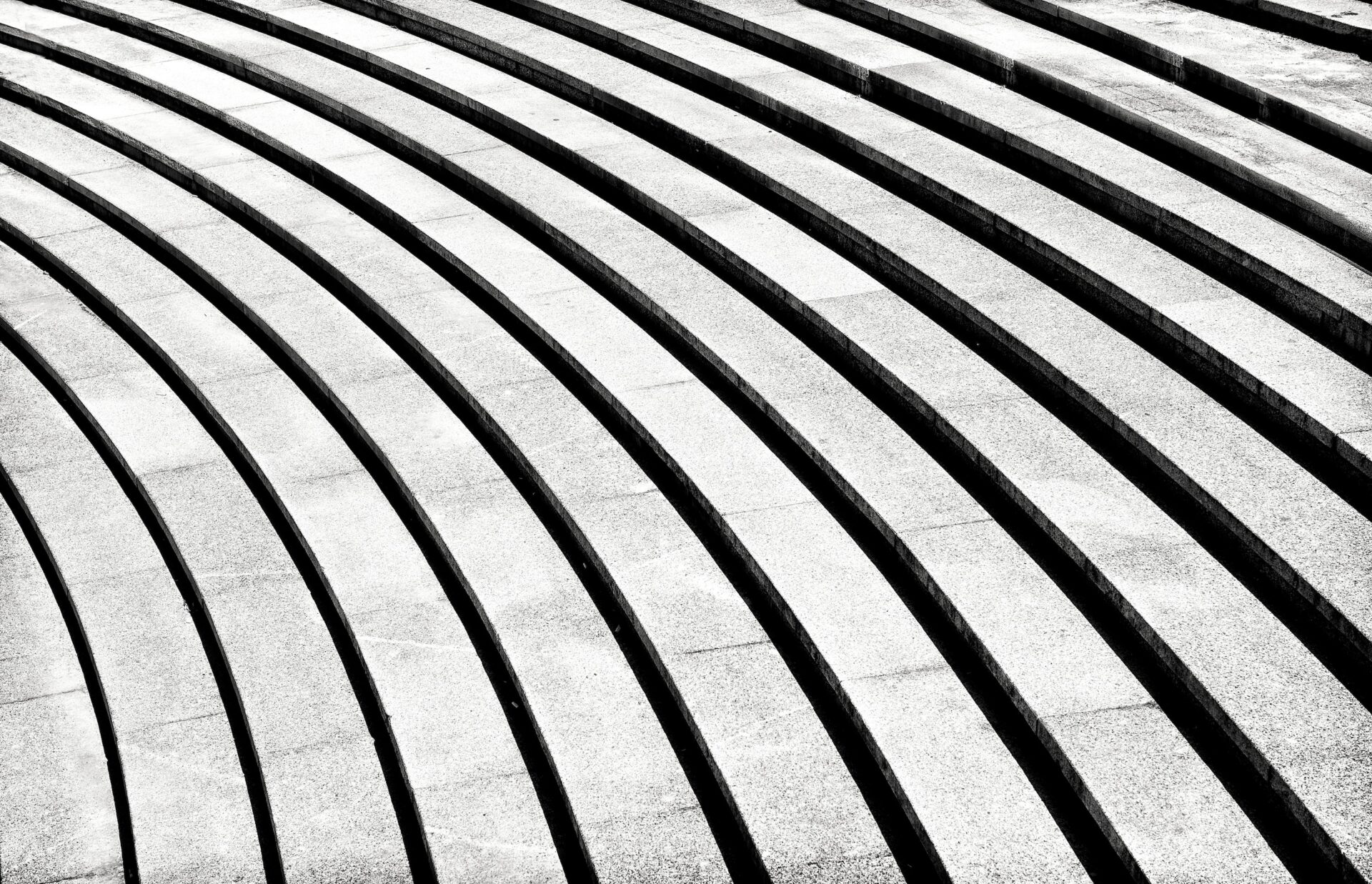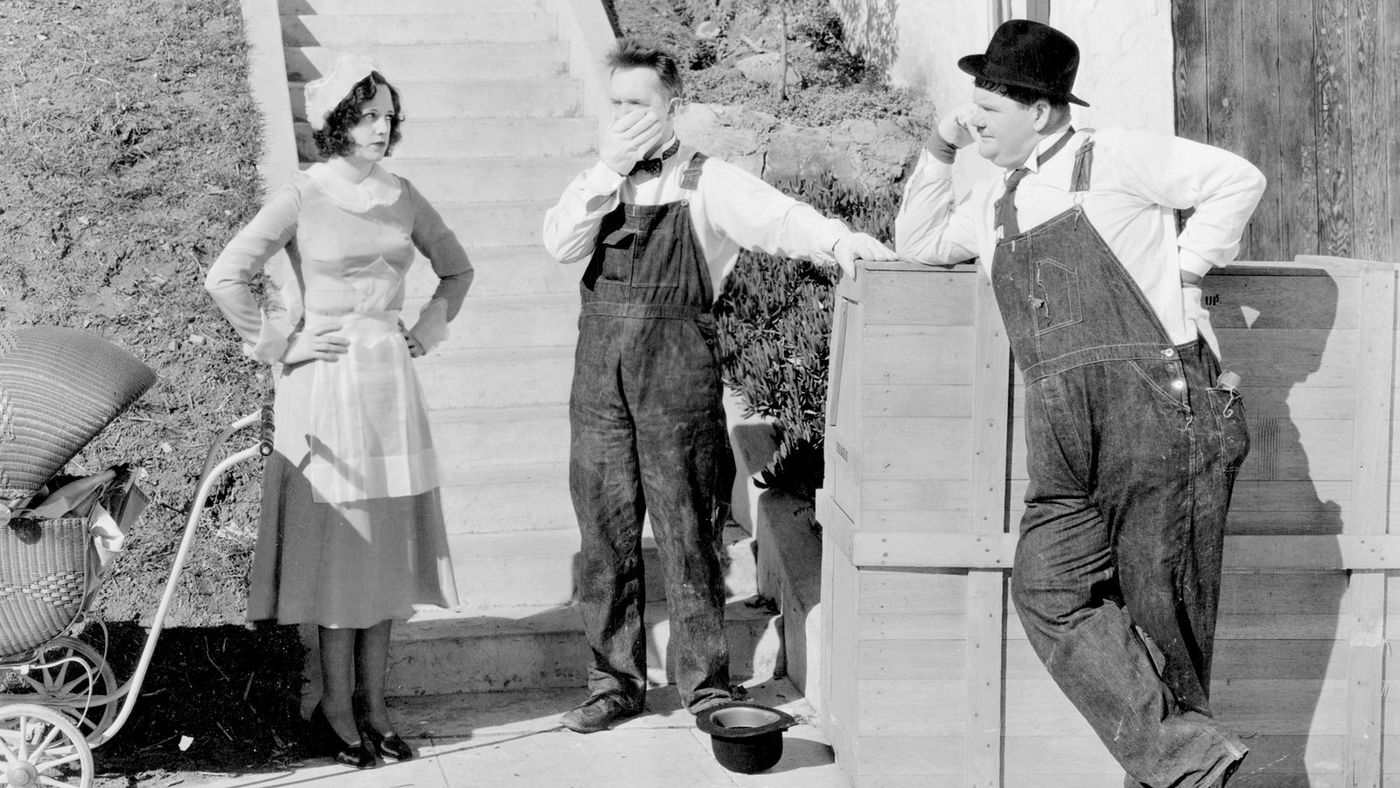
This post is part of my “Bucket List” series of Hidden Gems in L.A. Follow along as I explore and share some of my favorite sources of inspiration around our county. See the entire series here.
In my estimation, L.A. is about equally known for its traffic as it is for being home to Hollywood. Yes, L.A. is a city of cars and has been since the 1950s. After the streetcars and L.A. subways closed (you can read about the old subways tunnels under L.A. here), freeways took over and created a new geography and vocabulary for us to reference (the 405, PCH, the 10, the 5…). I spend a lot of time in my car, like any Angeleno, but I really love finding ways to get out on foot.
Let’s look at some of the hidden gems that folks use every day to navigate Venice and hillside neighborhoods: L.A.’s hidden walkways and stairs!
Walkways
Originally built in the early 1900s, the Venice Walkways were inspired by Venice, Italy. These narrow pedestrian-only walkways have been maintained for well over a 100 years and are still in use today. Hidden from the beaten path, you can find some of the most expensive real estate in L.A. lining either side. It’s high-density living hidden away, kind of like finding a small town in the middle of Los Angeles. If you’re looking for a nice, cool place to walk during the hot summer months, tree canopies provide constant shade and the gardens and beautiful old homes are eye candy for the hungry architect!
There are four walkways, Nowita Place, Marco Place, Amoroso Place, and Crescent Place, which extend from Lincoln Boulevard west to Abbot Kinney, to name a just a few in the area. Residents have fought hard over the years to keep the noise of the busy and loud L.A. streets and freeways from intruding into these lovely walkways. Although these homes were originally owned by artists and bohemians, rising real estate prices have made this a very exclusive part of the city. That said, it’s still completely free to stroll down the walkways and enjoy the scenery and seclusion!
Stairways

Before L.A. was a city of cars, it actually had an extensive and very efficient public transportation service. Red and yellow streetcars serviced pretty much everywhere, all you had to do was find the right transit line
. To help people get from their homes in the hills to the right transit stops, along with schools and markets, hundreds of stairways were built for pedestrians. Although the usefulness of these stairways decreased when the automobiles took over, approximately 450 of them still exist today and are usable by the public.
Probably the most popular set of hidden stairways in L.A. is the Beachwood Canyon Stairs. You could think of these as the stairways to the stars, as many Hollywood legends owned homes along this path. You can find Humphrey Bogart and Bela Lugosi’s mansions, along with incredible views of downtown L.A., the Griffith Park Observatory, and the Hollywood sign.
If you are looking for a place to get a real workout, the Baxter Stairways in the hills of Echo Park are the steepest in the entire city. Not only will you find incredible views of the city on your way up and down, you will also be able to work up a sweat!
If you’re a fan of classic cinema, you will find an iconic location at the Music Box Stairway. These stairs were the very ones where Laurel and Hardy made their academy-award winning short film, “Music Box”, where they attempt to get a piano all the way up to the top of the steps!

Lilyan Irene, Stan Laurel and Oliver Hardy in the short film “The Music Box” (1932). (Los Angeles Times file photo)
To find the Hollywood Bowl stairs, you need to go exactly where you’d expect. The Hollywood Bowl is actually a L.A. County Regional Park, and is fully open to the public. Along the walk up the stairs, you will find many stunning architectural hidden gems, including ones designed by famous architects like Frank Lloyd Wright.
These are only a few of the many, MANY stairways of Los Angeles that are fully accessible to the public. Ignoring the fabulous views and the historical importance of these stairways, they are also fantastic places for hiking within the city. To explore these stairways, and walkways, is to get to know Los Angeles on a much deeper level. And for someone who loves this city and its architecture that is something to be celebrated!
